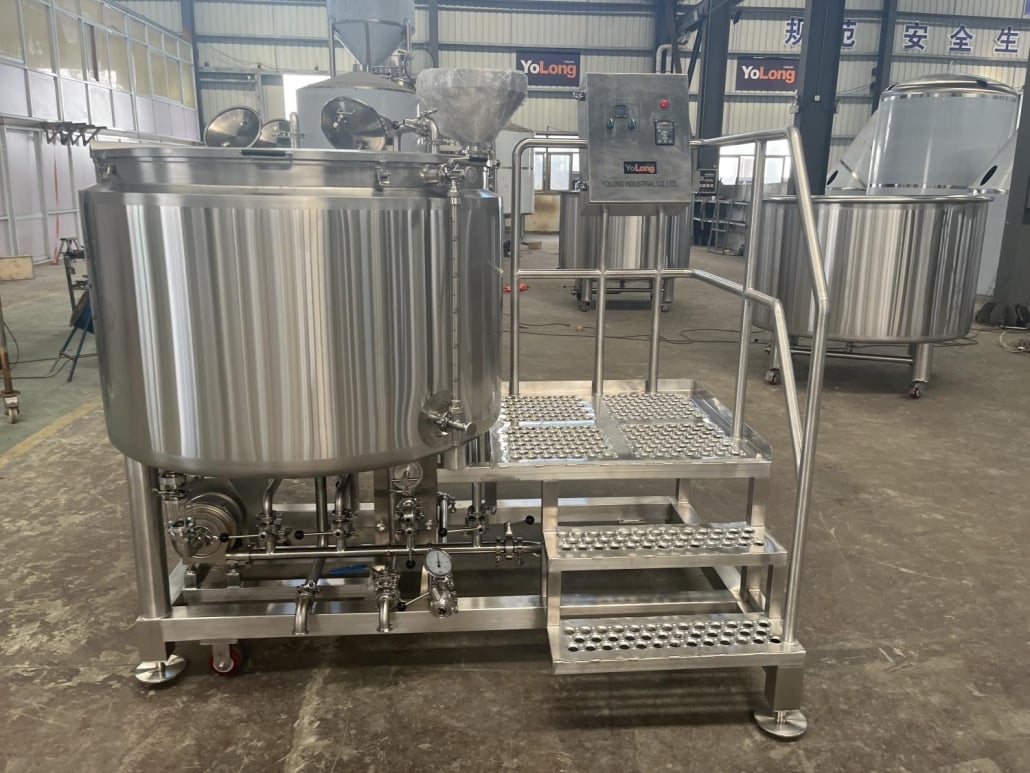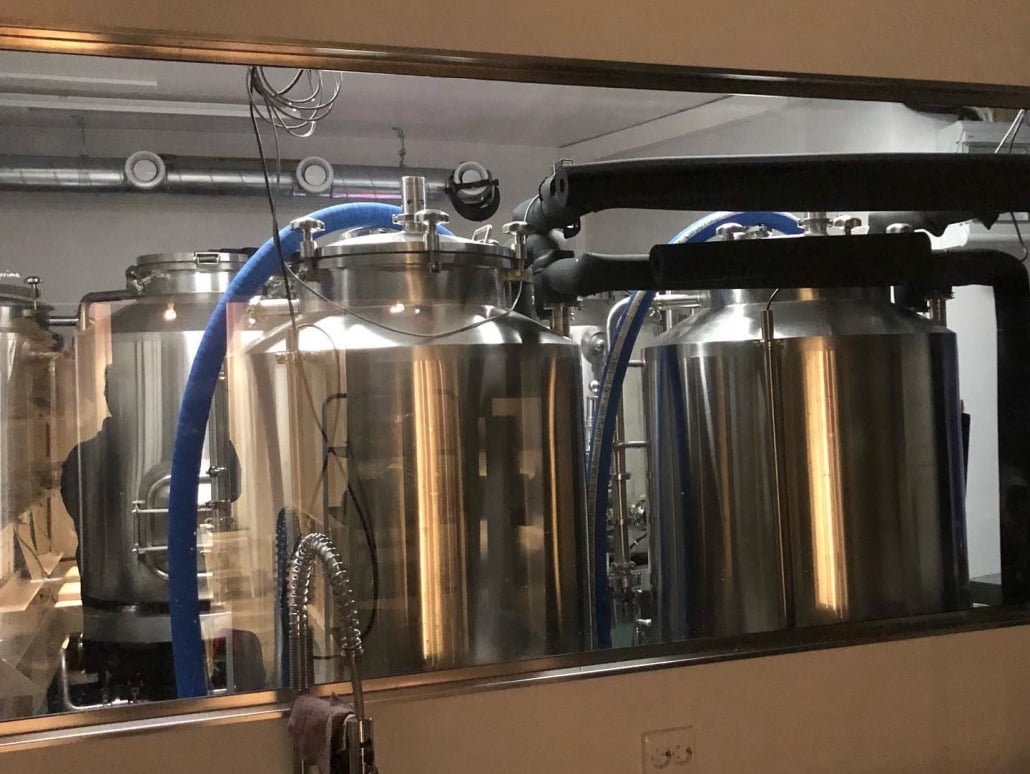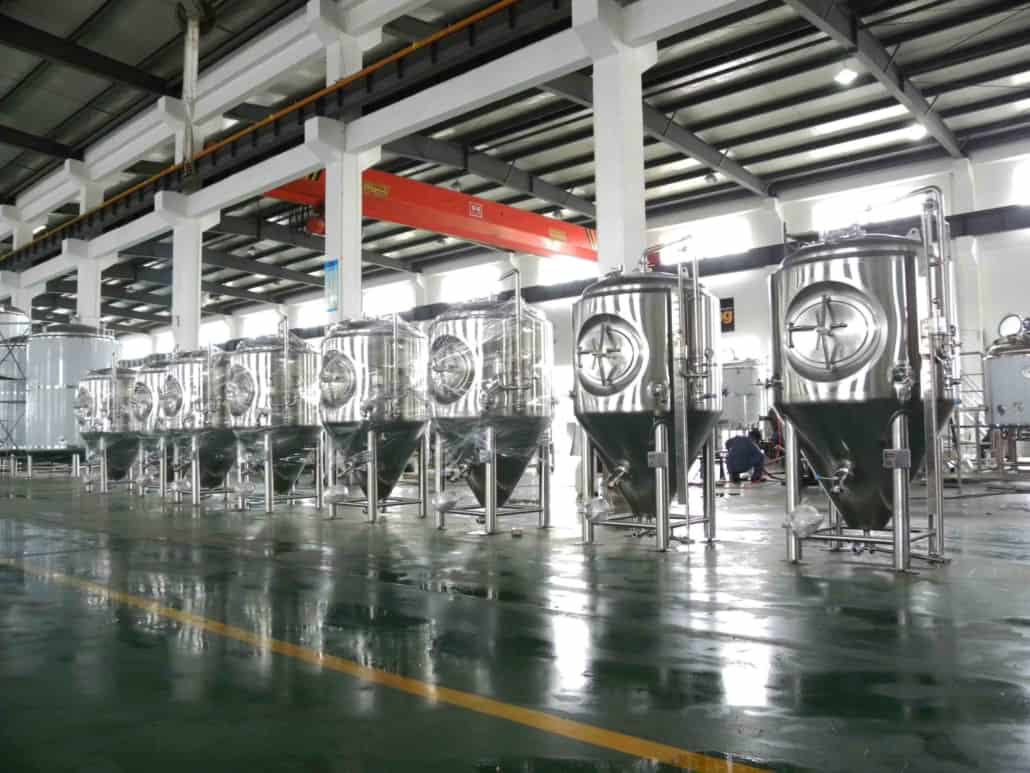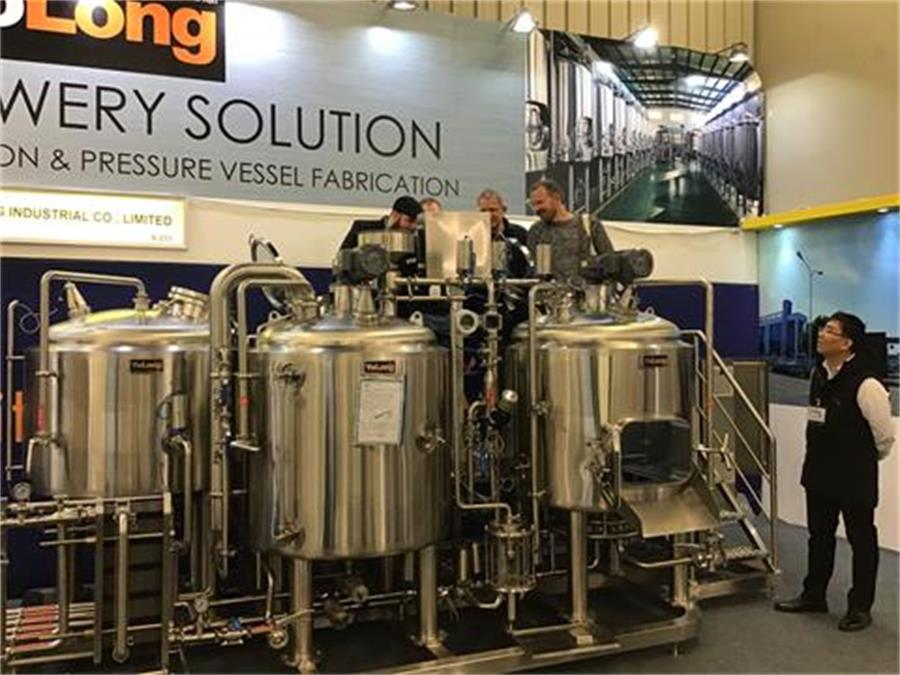Microbrewery Equipment Costs:10 Essential Tips for Estimating
Introduction
In recent years, the craft beer industry has experienced a significant surge in popularity, with microbreweries at the forefront of this trend. Entrepreneurs and beer enthusiasts alike are drawn to the idea of crafting unique, flavorful brews tailored to their local communities. However, starting and operating a microbrewery comes with its challenges, and one major consideration is the microbrewery equipment cost.
Understanding Microbrewery Equipment
What is a Microbrewery?
Before delving into microbrewery equipment cost, it’s essential to understand what a microbrewery entails. Unlike large-scale commercial breweries, microbreweries are small, independent establishments that produce beer in limited quantities. They often focus on quality, creativity, and local appeal.
Key Equipment Components
A microbrewery requires a range of specialized equipment to carry out the brewing process efficiently. Understanding the key components is vital to estimating the overall cost accurately. Some of the crucial equipment includes:
Brewing Kettles
The brewing kettle is where the magic happens. It’s where ingredients like malt, hops, water, and yeast come together to create the wort, the liquid base of beer.
Fermentation Tanks
Fermentation tanks are where the wort is left to ferment and transform into beer. The type, size, and quantity of tanks will depend on the brewery’s production capacity.
Cooling and Heating Systems
Maintaining precise temperatures during various stages of brewing is crucial. Cooling and heating systems are essential to control fermentation and achieve the desired beer characteristics.
Wort Chillers
Wort chillers rapidly cool down the boiled wort before transferring it to fermentation tanks. This process helps prevent unwanted off-flavors.
Filtering and Cleaning Equipment
Ensuring the beer is free of sediment and impurities requires filtration equipment. Cleaning equipment is also essential to maintain hygiene and prevent contamination.
Bottling and Kegging Systems
Once the beer is ready, it needs to be packaged for distribution. Bottling and kegging systems serve this purpose, allowing the beer to reach consumers in various formats.

Factors Influencing Microbrewery Equipment Cost
The microbrewery equipment cost can vary significantly based on several key factors. Understanding these factors can help brewery owners make informed decisions and plan their budgets effectively.
Scale and Production Capacity
The size of the microbrewery and its production capacity play a significant role in determining microbrewery equipment cost. Larger breweries with higher output capabilities generally require more extensive and expensive equipment.
Material and Build Quality
The materials used in the construction of brewing equipment can impact the overall cost. High-quality materials may come with a higher price tag but often offer better longevity and performance.
Automation and Technology
Some breweries may opt for advanced automated systems to streamline their brewing processes. While these technologies can improve efficiency, they can also add to the initial investment.
Brand and Supplier
Choosing reputable brands and suppliers can ensure reliable equipment, but it may also come with a premium cost. Weighing the benefits of well-known suppliers versus lesser-known options is crucial.
Customization and Additional Features
Brewery owners may have specific requirements or want custom features in their equipment. While this allows for a personalized setup, customization can increase costs.
Estimating the Cost of Microbrewery Equipment
The overall cost of microbrewery equipment will depend on the brewery’s size, production capacity, and specific needs. Here’s a breakdown of microbrewery equipment cost for small, medium, and large-scale microbreweries:
Small-Scale Microbrewery
For a small microbrewery with a limited production capacity, the equipment cost can range from $100,000 to $250,000. This would typically include essential brewing kettles, fermentation tanks, and basic bottling or kegging systems.
Medium-Scale Microbrewery
A medium-sized microbrewery with a moderate production capacity can expect equipment costs between $250,000 to $500,000. This allows for more advanced systems and additional tanks to increase production.
Large-Scale Microbrewery
Large-scale microbreweries with high production capabilities can incur equipment costs exceeding $1 million. These breweries require extensive automation, multiple fermentation tanks, and sophisticated bottling or kegging lines.
Hidden Costs and Considerations
Beyond the upfront equipment expenses, microbrewery owners must consider several hidden costs that can impact their budgets over time.
Installation and Setup Expenses
Installing brewing equipment and setting up the brewery space can add significant costs. This includes plumbing, electrical work, and compliance with safety regulations.
Maintenance and Repairs
Ongoing maintenance and occasional repairs are necessary to keep the brewing equipment in optimal condition. Budgeting for these costs is essential for smooth operations.
Utility Costs
Breweries consume a substantial amount of water, electricity, and gas during production. Monitoring and managing utility expenses are crucial to minimizing overheads.
Licensing and Legal Compliance
Obtaining the necessary licenses and permits to operate a microbrewery is a legal requirement. Failure to comply with regulations can result in fines and business disruptions.
Packaging and Marketing
Packaging the beer attractively and developing effective marketing strategies are essential for reaching customers and gaining traction in the market.

Financing Options for Microbrewery Equipment
Starting a microbrewery often requires significant upfront capital. Several financing options are available to assist aspiring brewers in acquiring the necessary equipment:
Traditional Bank Loans
Many entrepreneurs opt for bank loans to fund their microbreweries. However, this may require a robust business plan and collateral.
Microbrewery Equipment Leasing
Leasing equipment allows brewery owners to conserve cash flow and upgrade to newer models easily.
Equipment Financing Companies
Specialized equipment financing companies cater to the unique needs of microbreweries and offer tailored financing solutions.
Crowdfunding and Investors
Some microbreweries turn to crowdfunding platforms or seek investors willing to support their venture in exchange for equity or other benefits.
Tips for Cost Optimization
Starting a microbrewery is undoubtedly a significant investment, but there are ways to optimize costs and maximize efficiency:
Prioritize Essential Equipment
Focus on acquiring the essential brewing equipment first and gradually invest in additional components as your brewery grows.
Consider Used or Refurbished Options
Used or refurbished equipment can be a cost-effective alternative, provided it is in good condition and meets quality standards.
Negotiate with Suppliers
Don’t hesitate to negotiate with equipment suppliers to get the best deal possible. Bulk purchases or long-term partnerships may lead to discounts.
Embrace Energy Efficiency and Sustainability
Investing in energy-efficient equipment not only reduces operating costs but also aligns with environmentally conscious practices.
Plan for Long-Term Investment
Consider the long-term benefits of investing in high-quality equipment that will serve your brewery for years to come.
Case Studies: Microbrewery Equipment Costs
To illustrate the diversity of microbrewery setups and their associated costs, here are three case studies:
Case Study 1: Small Brewpub Startup
John and Sarah dream of opening a small brewpub in their local neighborhood. They plan to produce small batches of craft beer for their community. To get started, they decide to invest in a 3-barrel brewing system with basic fermentation tanks, a manual bottling line, and a taproom setup. Their estimated equipment cost is around $150,000. John and Sarah opt for a mix of new and used equipment to optimize their budget.
Case Study 2: Expanding Production Capacity
After successfully operating a small microbrewery for a few years, Mark and Emily are ready to expand their production capacity. They decide to upgrade to a 10-barrel brewing system with additional fermentation tanks and a semi-automated bottling line. The total cost of this expansion project is estimated at $400,000. Mark and Emily secure financing through a combination of equipment leasing and a bank loan.
Case Study 3: High-Tech Craft Brewery
Alex and Mike have ambitious plans for their craft brewery. They want to produce a wide range of beer styles and distribute their products regionally. To achieve this, they invest in a state-of-the-art 30-barrel automated brewing system, multiple fermentation tanks, and a fully automated packaging line. The cost for this high-tech setup amounts to $1.5 million. Alex and Mike secure funding through a mix of private investors and a specialized equipment financing company.

Conclusion
The microbrewery equipment cost can vary significantly depending on the scale, production capacity, and customization requirements. Aspiring brewery owners must carefully assess their needs, budget constraints, and long-term plans to make informed decisions. By understanding the key factors influencing equipment costs and considering hidden expenses, microbreweries can set themselves up for success.
Microbrewing offers an exciting journey filled with creativity and the chance to connect with local beer enthusiasts. While the initial investment might seem daunting, the rewards of owning a thriving microbrewery make it a venture worth pursuing.
FAQs
1. How much does it cost to start a small microbrewery? Starting a small microbrewery can cost anywhere from $100,000 to $250,000, depending on the equipment and scale.
2. Can I save money by purchasing used microbrewery equipment? Yes, purchasing used or refurbished equipment can be a cost-effective option, but it’s essential to ensure the equipment is in good condition and meets quality standards.
3. What are some financing options available for microbrewery equipment? Microbrewery owners can explore traditional bank loans, equipment leasing, financing companies, or crowdfunding platforms to secure funding.
4. How can I optimize the costs of running a microbrewery? You can optimize costs by prioritizing essential equipment, considering energy-efficient options, negotiating with suppliers, and planning for long-term investments.
5. Is sustainability important in microbrewing? Yes, sustainability is becoming increasingly important in the brewing industry. Embracing eco-friendly practices not only reduces costs but also appeals to environmentally conscious consumers.
Frequently Asked Questions (FAQ)
- Q1: What is a realistic budget range for Microbrewery Equipment at 5–15 bbl scale?
A1: Typical turnkey ranges (brewhouse + cellar + basic packaging) run $250k–$650k depending on automation, tank count, and utilities. Site work, glycol, and installation add 15–30%. - Q2: How many fermenters should I buy relative to the brewhouse?
A2: Plan FV capacity at 4–6× your brewhouse size (e.g., 10 bbl brewhouse with 40–60 bbl total FV capacity). Use double-batch FVs to maximize brewhouse turns. - Q3: Which utility costs most impact TCO for microbreweries?
A3: Thermal energy (steam/gas/electric for hot side), chilling (glycol), and water/sewer. Heat recovery (stack vapor condenser, HLT preheat) and CIP optimization reduce OPEX 10–25%. - Q4: Is automation worth the premium at microbrewery scale?
A4: Yes when labor is constrained. Auto-lauter controls, VFD pumps, and recipe sequencing can cut brewday labor 15–30% and improve yield by 1–2% extract. - Q5: What lead times should I expect in 2025?
A5: 14–24 weeks for brewhouse vessels and 8–16 weeks for tanks; controls/skids can add 4–8 weeks. Shipping, customs, and rigging often add 2–4 weeks.
2025 Industry Trends: Microbrewery Equipment
- Electrification and hybrids: More electric or hybrid steam/electric brewhouses to meet emissions goals and access utility rebates.
- Heat and water recovery: Vapor condensers and CIP endpoint controls becoming standard specs in RFPs.
- Sensor-enabled cellars: Inline DO/density sensors feeding cloud dashboards via OPC UA/MQTT for tighter fermentation control.
- Modular growth: Skid-mounted utilities (glycol, CIP, compact pasteurization) lower install time and future expansion costs.
- Safety and compliance: Routine PRV validation, CO2 monitoring tied to HVAC, and hygienic design documentation at FAT/SAT.
2025 Cost and Performance Benchmarks
| Metric | 2023 Typical | 2025 Target/Best-in-Class | Notes / Sources |
|---|---|---|---|
| Water use (hL water/hL beer) | 4.5–6.0 | 3.0–4.0 | Brewers Association sustainability: https://www.brewersassociation.org |
| Brewhouse energy (kWh/hL equiv.) | 10–14 | 6–9 | With vapor condenser + HLT preheat |
| Post-transfer DO (ppb) | 80–150 | 20–50 | ASBC DO/TPO methods: https://www.asbcnet.org |
| CIP cycle time per FV (min) | 90–120 | 55–80 | Conductivity/temp endpoints |
| Unplanned downtime (%) | 6–10 | <3 | Predictive maintenance, remote support |
| Typical lead time (weeks) | 18–30 | 14–24 | Vendor/scope dependent |
Latest Research Cases
Case Study 1: Heat Recovery Pays Back in 24 Months (2025)
Background: A 15 bbl microbrewery faced rising gas costs and hot stack losses.
Solution: Installed a vapor condenser to preheat the HLT, insulated hot-side piping, and optimized mash/lauter rests via PLC.
Results: Brewhouse energy intensity dropped 23% (to ~7.6 kWh/hL eq.); annual utility savings ~$22k; payback estimated at 24 months.
Case Study 2: Sensor-Driven Fermentation Improves Yield (2024)
Background: Inconsistent attenuation and diacetyl rests increased tank residency and costs.
Solution: Added inline density and DO sensors with OPC UA integration and alarm limits; standardized diacetyl rest SOPs.
Results: Average cycle time reduced 1.5 days; dump rate fell from 1.8% to 0.7%; extract yield improved ~1.2%.
Expert Opinions
- Mary Pellettieri, Brewing Quality Consultant; Author, Quality Management for Breweries
Viewpoint: “Specify measurable hygiene and CIP validation. Surface finish, drainability, and weld quality save money every single batch.” - Bart Watson, Chief Economist, Brewers Association
Viewpoint: “Right-size Microbrewery Equipment to realistic demand. Balanced cellar and flexible packaging lower capital risk and improve ROI.” - Dr. Tom Shellhammer, Professor, Oregon State University
Viewpoint: “At small commercial scale, controlling oxygen ingress and thermal profiles drives shelf life and flavor stability more than most equipment upgrades.”
Practical Tools/Resources
- Brewers Association (sustainability benchmarks, safety, cellar best practices) — https://www.brewersassociation.org
- ASBC Methods of Analysis (DO/TPO, VDK, bitterness, pH) — https://www.asbcnet.org
- MBAA Technical Quarterly & webinars (equipment design/operations) — https://www.mbaa.com
- DOE Better Plants (steam, electrification, heat recovery) — https://www.energy.gov
- OPC Foundation (OPC UA) for sensor/control integration — https://opcfoundation.org
- Brewery Safety Alliance resources (CO2 monitoring/PRV practices) — https://www.osha.gov and BA safety resources
Last updated: 2025-09-01
Changelog: Added 5 targeted FAQs on budgeting, cellar sizing, utilities, automation ROI, and lead times; inserted 2025 trends with cost/performance benchmark table and authoritative sources; provided two case studies on heat recovery and sensor-driven fermentation; included expert viewpoints and practical tools/resources for Microbrewery Equipment cost estimation
Next review date & triggers: 2026-03-01 or earlier if BA/ASBC guidance updates, major utility incentive/electrification programs change, or supply-chain lead times shift significantly
Share this entry
Interested in learning more about Brewing Systems including additional details and pricing information? Please use the form below to contact us!
YOLONG BREWERY EQUIPMENT FAQS
- Commercial Brewery / Craft Brewery / Microbrewery / Nanobrewery
- What is The Difference Between Craft Beer and Industrial Beer?
- The Bespoke Differences In Custom Brewing Systems
- Everything You Need to Know About Kettle Souring
- How to Choose Brewing Equipment for Your business?
- How To Choose The-Best Partner To Build Your Commercial Microbrewing System?
- Two Detection Sensors That You Need To Use In Your Brewhouse System
- Remote Control Applications in Brewing Equipment/How does it work?
- How To Clean Your Brand New Brewery Tanks?

